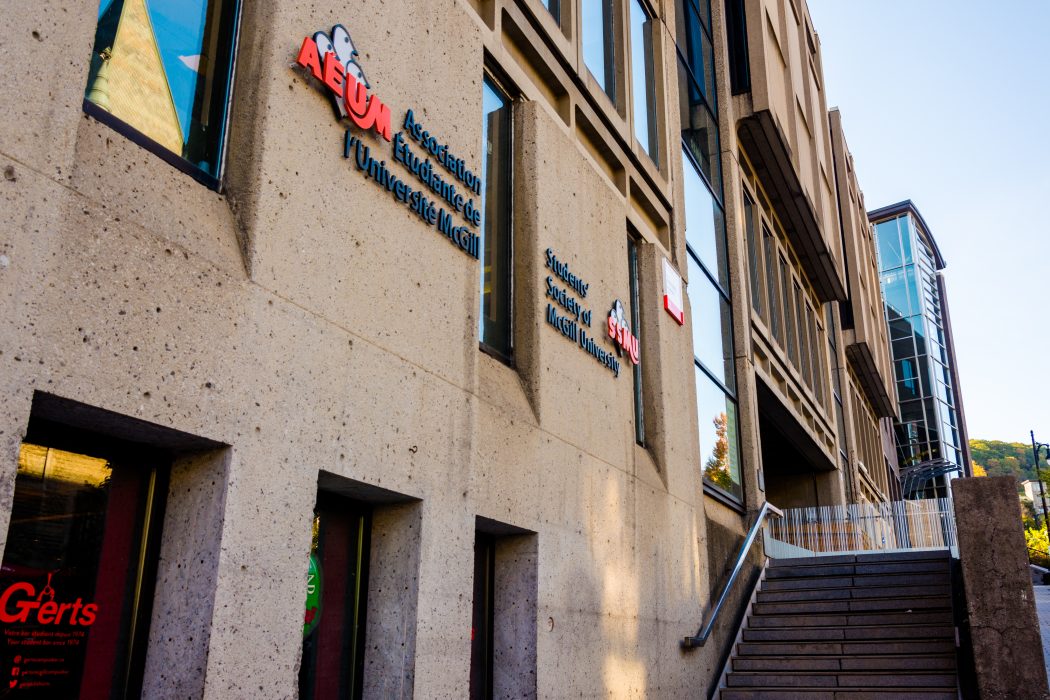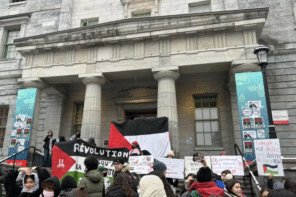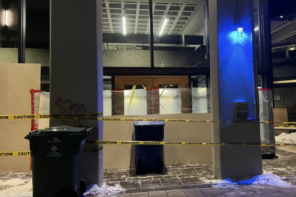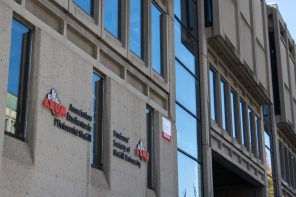On February 23, the SSMU Affordable Student Housing Committee hosted a Public Assembly on Student Housing as a forum for student concerns about the Montreal housing market. Led by SSMU Vice-President External Ayo Ogunremi, U4 philosophy and sociology, along with Samuel Helguero, 2L Law; Rachel Schleifer, U2 environment; and Andrew Faber, second-year Master’s urban planning, the event was at once a collective forum and a lesson on housing issues facing lower-income Montreal residents.
In Ogunremi’s words, the Affordable Student Housing Committee, established by SSMU in fall 2019, serves “to build consciousness around issues affecting student housing, especially rental housing, and to facilitate the development of an affordable student housing project.” The committee also works to spread awareness of tenants’ rights and the negative effects of gentrification on lower-income communities.
All speakers at the event had campaigned for a number of past housing initiatives. These include the push to fully convert the Old Royal Victoria Hospital’s Ross Pavilion into a homeless resource centre and involvement in the Milton Park Citizens’ Committee, representing thousands of local McGill students (Ogunremi himself is its representative to SSMU).
The event began with organizers detailing SSMU’s partnership with UTILE, an organization that “dedicated to the promotion and development of affordable student housing.” Known for their work with Concordia University, UTILE boasts their architectural and financial expertise to raise money for student housing. The latter partnership hopes to provide 200-300 affordable student housing units with rent 15-30% below any given neighborhood market rate.
Faber and Schleifer followed with a presentation on the “financialization”, or commodification of valuable property on Montreal’s housing market. Faber’s presentation of this “major issue” in Canadian cities has been described by the UN Special Rapporteur on the Right to Housing as a “vehicle for wealth and investment—rather than a social good.” Within a financialized market, vacant housing is bought and sold purely based on future profits, and unsold vacant housing sits idle for years waiting for a rise in value. These circumstances turn dangerous for lower-income residents and first-time student renters who can fall prey to financial exploitation.
Montreal is at a particular risk for housing market financialization. Formerly a major manufacturing city, some of its traditionally working-class neighbourhoods such as Hochelaga-Maisonneuve were the product of industrial housing investment to situate workers close to the factories. With the decline of industry, the city’s growing FIRE (finance, insurance and real estate) economy has contributed increasingly to financialization.
Faber and Schleifer underlined this present housing market as morphing from an economic support under industrial conditions to an economy unto itself, profiting off housing itself with common disregard for lower-income renters. The FIRE industry, they said, relies on rising rents to grow. To the extent that firms who own profitable real estate benefit from deregulation, removal of rent controls and a general lack of public housing investment in the last two decades, they benefit also from the “Big Squeeze”: market takeover by the construction of luxury condominiums downtown and in rapidly gentrifying boroughs, sold for prices inaccessible to lower-income renters. Faber mentioned academic investigations into questionable rent hikes and eviction practices, citing the work of Andrew Crosby and Melissa García Lamarca.
Schleifer continued with an explanation of how McGill students are involved in this complicated urban dynamic. Other than short-term apartment rentals, home sharing apps such as Airbnb are preferred by landlords for financial and practical incentives. As vast numbers of McGill students are located in boroughs with consistent rent hikes, Faber and Schleifer emphasize the connection between neighbourhood gentrification and nearby university campuses. They describe a “double effect” on the neighbourhood where many students move in, willing to pay higher rents, and lower-income residents are driven out as a result.
Student attendees reflected on their mixed rental experiences in light of this information. They agreed that it was difficult to properly understand Quebec housing regulations, and expressed concern about allyship with lower-income residents affected by gentrification. With greater awareness of social inequalities during the COVID-19 pandemic, these students may be but a few out of the wider McGill community becoming more aware of the city’s housing challenges.








